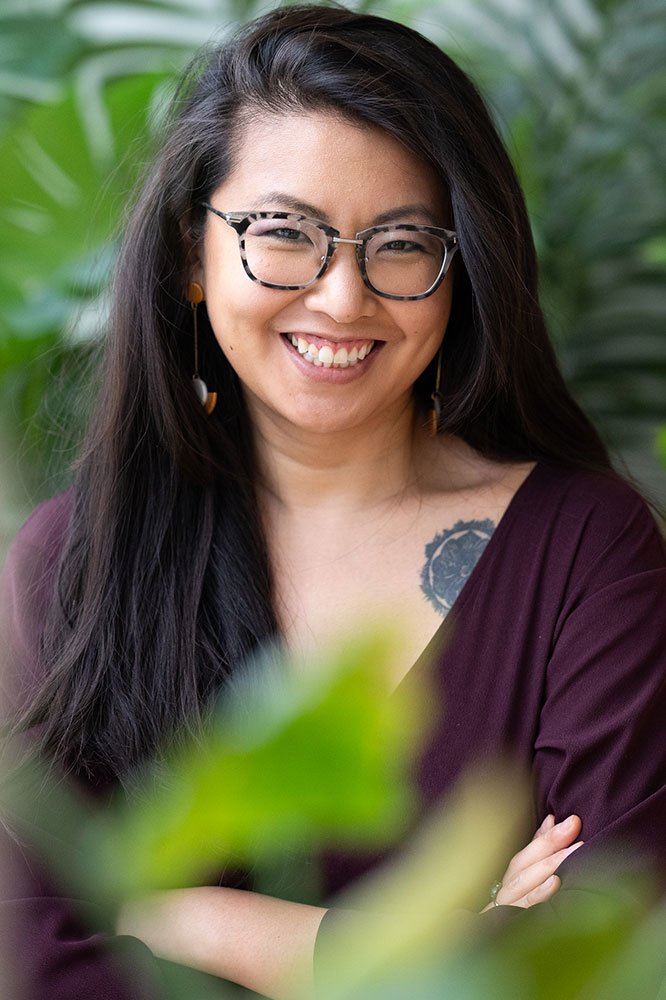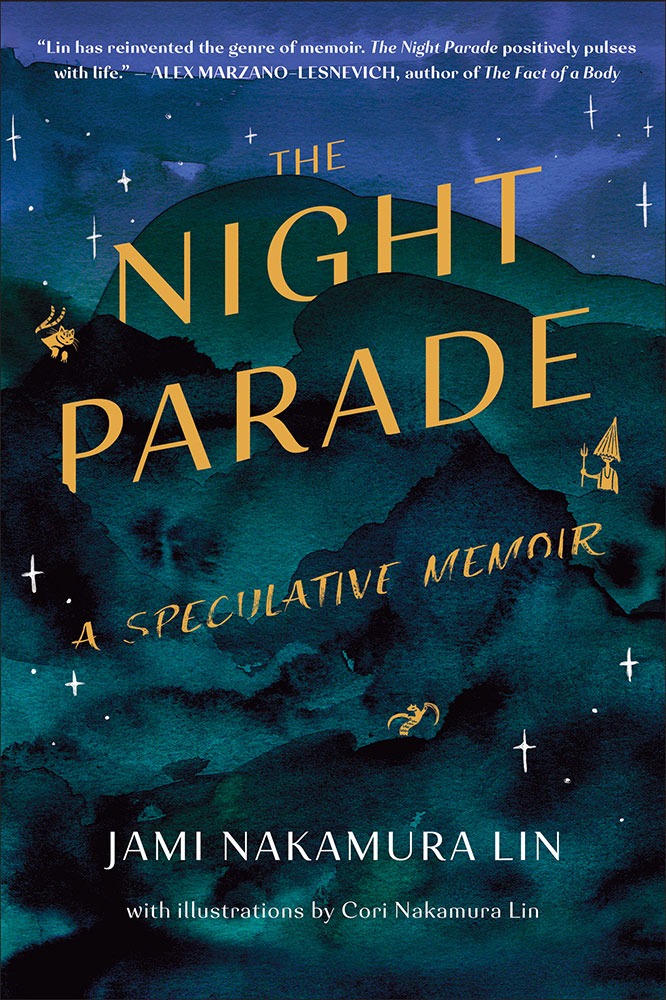In her beautiful and bizarre book The Night Parade: A Speculative Memoir, Chicago-area author Jami Nakamura Lin draws upon the folklore, monsters, and myths of her Japanese Taiwanese Okinawan American heritage to explode conventional narratives of mental illness and grief. Born in Chicago, Nakamura Lin grew up in Rolling Meadows, spent her 20s in Ravenswood and North Park, and then moved to Des Plaines. With haunting illustrations by her younger sister Cori, her latest genre-bending story weaves together fable and memory, research and family history with elegance and honesty to create a singular record of family, diaspora, art, and belonging. As she writes, “to not let these stories out means that we must swallow them secretly,” and reading The Night Parade feels like being let in on a glorious secret: Whoever you are, you are not alone. The memoir is out November 7, published by Mariner/HarperCollins.

This book examines some of your hardest days, from bipolar disorder — including the moment in seventh grade when you were still undiagnosed “at which other people began to be afraid of me” — and the unexpected death of your father. How did you decide to write about these things and in this way, with an emphasis on ambiguity and the supernatural?
From the time I was 4 or 5, I’ve used storytelling as a way to process my experiences — hence the stacks and stacks of journals! I’ve known for decades I wanted to write about this, but I didn’t know exactly how. In grad school I tried to write about my bipolar disorder in a more straightforward way, but I couldn’t get enough critical distance. Afterward, I switched to a completely new project: a YA novel based on Japanese folklore. That book didn’t work out, either. In the end, seeds of both those projects fused together into what later became The Night Parade. Using yо̄kai and folklore as a backbone was the only way I could look at my father’s death and my bipolar disorder clearly — by looking at it sideways.
Most readers probably grasp what a memoir is, but how would you explain “speculative” and what does that speculation let you do?
Some people use it to describe any writing that uses “perhaps-ing”: for example, straightforward scenes that are imagined because the author wasn’t there and doesn’t have the information. In my own work, I think of speculative memoir as using the genre conventions usually aligned with speculative fiction, fairy tales, and/or folklore. Time travel! Portals! Narrative and syntactical flattening, different perspectives and points of view.
This solves one of my problems, that I’ve told certain momentous life events — for example, the week I couldn’t get out of bed, which led to a partial hospitalization program — over and over. They’ve crystalized. It’s hard to look at them anew, to interrogate them. When I transform the tale — using the perspective of a bird looking at my character through the window, panicked because time has stopped —it allows me to see my own life through a warped mirror, and in the warping I can find something that feels true.
You get meta and take the tone of an educator from the first page on: “In the beginning I choose kishōtenketsu, the Japanese version of the four-part narrative structure that flows from Chinese poetry.” I love how this book edifies the reader not just on the content of stories, but their shapes. What do you most hope to teach people?
One thing I hope readers will take away is that our stories do not always have to fit the shapes that we’ve been taught — that the fractures and the tension can be most illuminating.
The illustrations add strangeness to an already wonderfully strange book. At what point did you know your sister Cori would provide them and how did that collaboration work?
Cori and I have collaborated since we were teens making zines. The book started out as a Catapult essay column, and she illustrated the column. So when we put the book proposal together I asked my agent if publishers would be interested in artwork. And they were! I thought it would be a hard sell, but editors were really into it. When we sold the book, I gave her a list of the 16 yо̄kai and roughly what the topics would be about. She was done with the artwork way before I was done with a first draft.
You say the best stories convey “pleasure […] curiosity […] joy.” What stories have you read lately that give you these feelings?
I think it’s hardest to find stories that bring me joy — there are ones I love a lot, but don’t give me this sense of delight. I just barreled through I Capture the Castle by Dodie Smith again because I needed a pick-me-up. Skimming through my bookshelves: the stories in Bora Chung’s Cursed Bunny, Toni Cade Bambara’s Gorilla, My Love, Gabriel Garcia Marquez’s Strange Pilgrims, Bernard Malamud’s Collected Stories.




